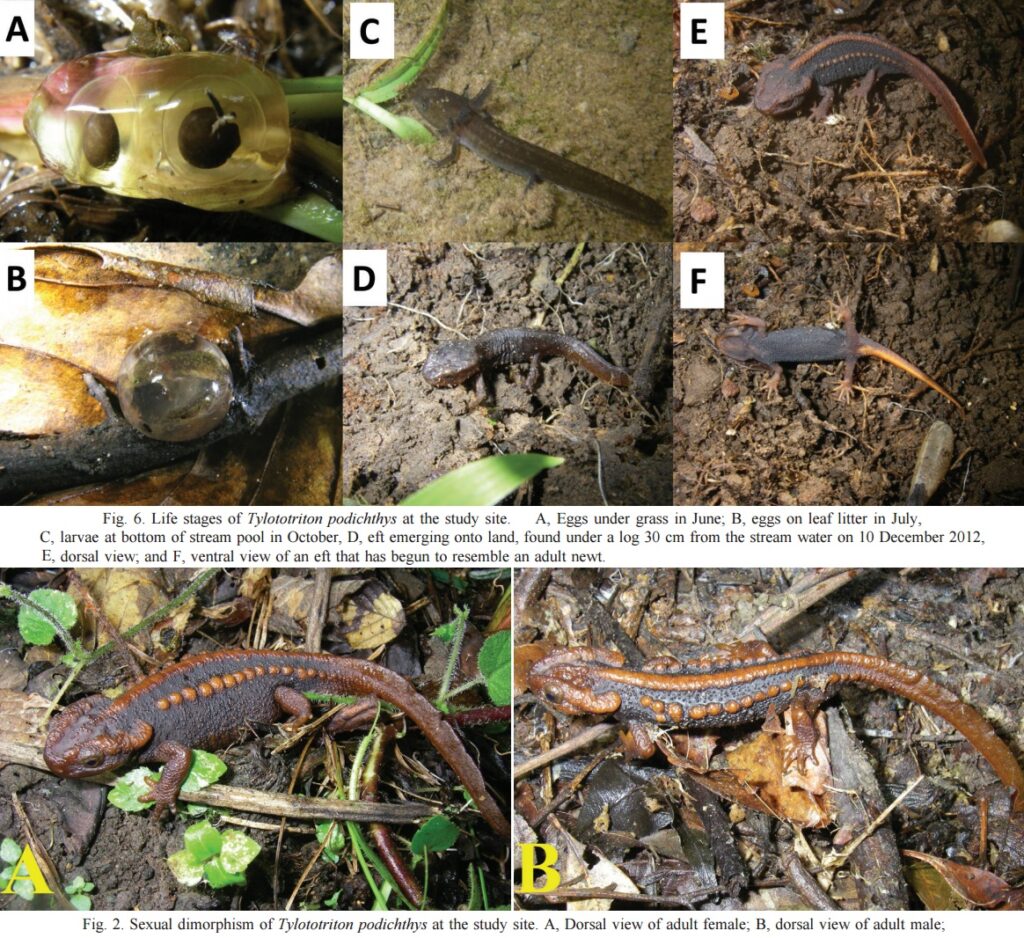Almost nothing is known on the ecology and natural history of Tylototriton (Knobby Newts) in Laos. Here, a population of the newly described T. podichthys was intensively studied in a 55,800 sq.m. area in Xiengkhouang Province, Laos, from June 2012–July 2013. Mark-recapture methods estimated 301 individuals of T. podichthys at the study site. Newts were abundant during the breeding season (June–July), with a maximum density of 8.75 newts in 100 sq.m. of stream. The sex ratio of adult males and females was almost equal and did not differ throughout the year. The population was sexually dimorphic, with females having larger and heavier bodies than males, and different cloacal morphologies during the breeding season. Males, females and immature newts (efts) used a variety of habitat and microhabitat types. Adult newts occupied a stream only during a brief breeding period, but otherwise were primarily terrestrial. The breeding season began in the early rainy season during June–July, and efts emerged from the stream during the dry, cold season beginning in December. Diet was studied by stomach-flushing methods, and consisted primarily of terrestrial invertebrates, especially woodlice (Ligiidae), earthworms (Haplotaxida) and pillbugs (Armadillidae). Unlike in many other newts, conspecific oophagy was not observed. Diet composition, number of prey consumed, and volume of prey consumed did not differ among adult males, adult females or efts.
Types:
published in 2015, language




